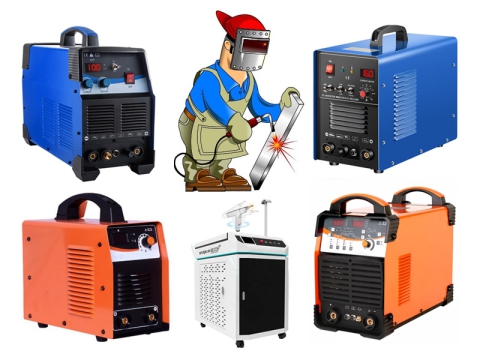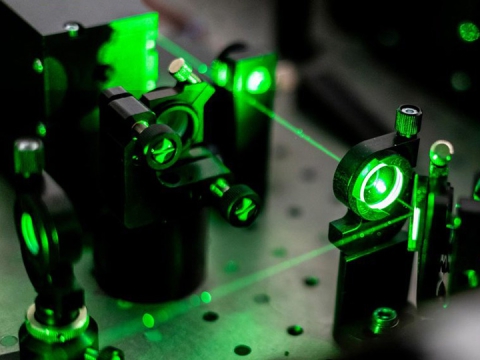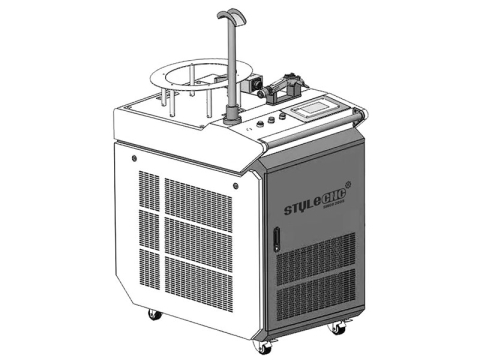
Laser Welding Basics
Laser welding is a non-contact process that requires access to the weld zone from one side of the parts being welded.
• The weld is formed as the intense laser light rapidly heats the material-typically calculated in milli-seconds.
• There are typically three types of welds:
– Conduction mode.
– Conduction/penetration mode.
– Penetration or keyhole mode.
• Conduction mode welding is performed at low energy density forming a weld nugget that is shallow and wide.
• Conduction/penetration mode occurs at medium energy density, and shows more penetration than conduction mode.
• The penetration or keyhole mode welding is characterized by deep narrow welds.
– In this mode the laser light forms a filament of vaporized material know as a “keyhole” that extends into the material and provides conduit for the laser light to be efficiently delivered into the material.
– This direct delivery of energy into the material does not rely on conduction to achieve penetration, and so minimizes the heat into the material and reduces the heat affected zone.
Conduction Welding
• Conduction joining describes a family of processes in which the laser beam is focused:
– To give a power density on the order of 10³ Wmm⁻²
– It fuses material to create a joint without significant vaporization.
• Conduction welding has two modes:
– Direct heating
– Energy transmission.
Direct Heat
• During direct heating,
– heat flow is governed by classical thermal conduction from a surface heat source and the weld is made by melting portions of the base material.
• The first conduction welds were made in the early 1960s, used low power pulsed ruby and CO2 lasers for wire connectors.
• Conduction welds can be made in a wide range of metals and alloys in the form of wires and thin sheets in various configurations using.
– CO2 , Nd:YAG and diode lasers with power levels on the order of tens of watts.
– Direct heating by a CO2 laser beam can also be used for lap and butt welds in polymer sheets.
Transmission Welding
• Transmission welding is an efficient means of joining polymers that transmit the near infrared radiation of Nd:YAG and diode lasers.
• The energy is absorbed through novel interfacial absorption methods.
• Composites can be joined provided that the thermal properties of the matrix and reinforcement are similar.
• The energy transmission mode of conduction welding is used with materials that transmit near infrared radiation, notably polymers.
• An absorbing ink is placed at the interface of a lap joint. The ink absorbs the laser beam energy, which is conducted into a limited thickness of surrounding material to form a molten interfacial film that solidifies as the welded joint.
• Thick section lap joints can be made without melting the outer surfaces of the joint.
• Butt welds can be made by directing the energy towards the joint line at an angle through material at one side of the joint, or from one end if the material is highly transmissive.
Laser Soldering and Brazing
• In the laser soldering and brazing processes, the beam is used to melt a filler addition, which wets the edges of the joint without melting the base material.
• Laser soldering started to gain popularity in the early 1980s for joining the leads of electronic components through holes in printed circuit boards. The process parameters are determined by the material properties.
Penetration Laser Welding
• At high power densities all materials will evaporate if the energy can be absorbed. Thus, when welding in this way a hole is usually formed by evaporation.
• This "hole" is then traversed through the material with the molten walls sealing up behind it.
• The result is what is known as a "keyhole weld. This is characterized by its parallel sided fusion zone and narrow width.
Laser Welding Efficiency
• A term to define this concept of efficiency is known as the "joining efficiency".
• The joining efficiency is not a true efficiency in that it has units of (mm2 joined /kJ supplied).
– Efficiency=V.t/P (the reciprocal of the specific energy in cutting) where V = traverse speed, mm/s; t = thickness welded, mm; P = incident power, KW.
Joining Efficiency
• The higher the value of the joining efficiency the less energy is spent in unnecessary heating.
– Lower heat affected zone (HAZ).
– Lower distortion.
• Resistance welding is most efficient in this respect because the fusion and HAZ energy is only generated at the high resistance interface to be welded.
• Laser and electron beam also have good efficiencies and high power densities.
Process Variations
• Arc Augmented Laser Welding.
– The arc from a TIG torch mounted close to the laser beam interaction point will automatically lock onto the laser generated hot spot.
– The temperature required for this phenomenon is around 300°C above the surrounding temperature.
– The effect is either to stabilize an arc which is unstable due to its traverse speed or to reduce the resistance of an arc which is stable.
– The locking only happens for arcs with a low current and therefore slow cathode jet; that is, for currents less than 80A.
– The arc is on the same side of the workpiece as the laser which allows doubling of the welding speed for a modest increase in the capital cost.
• Twin Beam Laser Welding
– If two laser beams are used simultaneously then there is the possibility of controlling the weld pool geometry and the weld bead shape.
– Using two electron beams, the keyhole could be stabilized causing fewer waves on the weld pool and giving a better penetration and bead shape.
– An excimer and CO2 laser beam combination showed improved coupling for the welding of high reflectivity materials, such as aluminium or copper could be obtained.
– The enhanced coupling was considered principally due to:
• altering the reflectivity by surface rippling caused by the excimer.
• a secondary effect coining from coupling through the excimer generated plasma.





